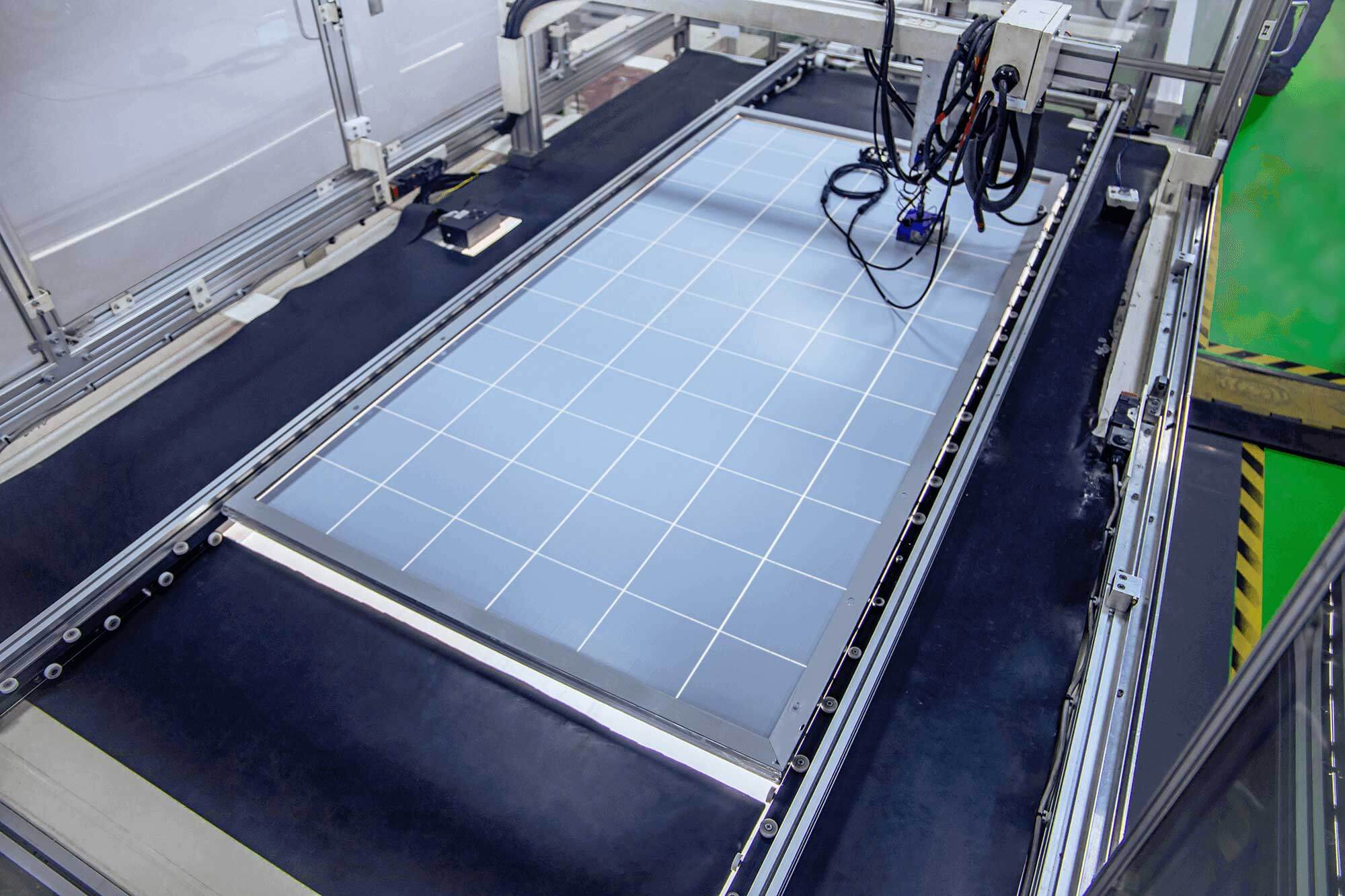
Solar projects in India encounter numerous hurdles stemming from the intricate landscape of solar installations, which poses a formidable obstacle to the seamless integration of robotics and automation. The diverse and often challenging geographical features across the country, such as rugged terrain, varying weather conditions, and remote locations, present a compelling challenge when attempting to deploy advanced technological solutions in the solar industry. Efforts to harness the full potential of robotics and automation in India’s solar sector are met with a need for innovative and adaptable solutions capable of navigating this complex environment. From hilly terrains to coastal regions and desert expanses, the topographical diversity demands a versatile and robust approach to automation that can withstand these diverse conditions. Discover the power of sustainable energy with Goldi Solar, India’s premier solar panel manufacturer, trusted EPC services provider, and dynamic Independent Power Producer (IPP). Embrace the future of clean energy solutions and partner with us today for a brighter and greener tomorrow.
Historically low electricity costs
According to the International Energy Agency’s World Energy Outlook 2020, solar power has outpaced all other forms of electricity generation in the past decade, making it the most cost-effective energy source in history. Solar technology is now cheaper than coal and gas in many major countries. As governments, businesses, and individuals seek greener and more affordable energy options, the pressure is on solar cell manufacturers to improve their products and reduce costs. One significant factor driving down costs has been advancements in the manufacturing of solar panels over the last ten years. To achieve this, manufacturers have had to scale up their production while incorporating new technologies. This requires more automation and enhanced quality control, as ensuring high yields of efficient solar panels is crucial in making solar energy both environmentally friendly and economically viable.
Complex Assembly
In the midst of rapid technological advancement and surging demand, the solar industry is experiencing a shift where expected production volumes are on the rise, but profit margins are under pressure. This dynamic echoes trends seen in other sectors, highlighting the paramount importance of streamlining production processes. Compounded by the challenges posed by the COVID-19 pandemic, manufacturers are increasingly turning to automation, including robotics for assembly, and advanced imaging techniques for quality control.
Automation and inspection play pivotal roles in ensuring the production of high-quality, consistent, and efficiently manufactured solar panels. Solar panels involve intricate components and multiple layers, demanding meticulous placement and alignment throughout the manufacturing process. While modern factories have largely automated material handling, cell cutting, and component bonding, any error in these stages risks compromising the initial performance and lifespan of each solar panel. This underscores the critical significance of inspection. End-of-line testing focuses on electrical parameters such as current, voltage, and peak power rating, ensuring that panels meet expected performance standards. Advanced imaging technology is employed to detect quality issues, such as cracks and misalignments, not only to assess initial quality but also to gauge the long-term durability of the panels in the field.
A Single Crack Can Tell the Future
In the pursuit of greater efficiency, modern silicon solar cells are undergoing a transformation, becoming increasingly thinner, sometimes reaching as little as 100 microns in thickness. While this thinning process reduces costs, it also renders the cells more fragile. At each stage of production, there exists a potential for tiny cracks to develop. For instance, after the soldering process, the copper connecting wires may contract, leading to small cracks as they pull away from the silicon boards they are meant to link. Cracks can also emerge during the crystal growth phase or during the cutting process. Join the solar revolution with Goldi Solar today and embrace a brighter, greener future for all. Make the switch to clean energy now.
Any imperfections in solar cells, be it cracks, poorly soldered joints, or mismatches, result in elevated resistance and give rise to hot spots over time. The long-term consequences of these hot spots include burnt marks that degrade both the solar cells and their back sheets, and if left unaddressed, they may even pose a fire hazard. Imperfections in the glass layer can increase the susceptibility of cells to breakage. The presence of shards from broken wafers or glass can halt entire production lines. Once installed, the front glass panel of a solar panel serves as the initial defense against various elements, including storms, dirt, and even accidental impacts like a stray baseball. If the glass becomes compromised, the panel’s ability to absorb and convert light diminishes. Additionally, other contaminants such as water and dust can infiltrate the panel, leading to more issues and compromising the overall integrity of the panel.
Factory Floor Realities
In the dynamic landscape of 2021, machine vision stands as a pivotal tool in the hands of manufacturers, elevating product quality and production efficiency to meet soaring demand. The primary challenge lies in identifying submicron defects that may not be immediate concerns but have the potential to trigger failures, reduce yields, and inflict material damage in the future. Traditionally, CCD- and CMOS-based cameras have been employed to detect microcracks on the assembly line. However, even with cooled sensors, these systems often necessitate extended integration times in low-light conditions, causing bottlenecks and added complexity in production. Enter the latest generation of high-resolution, high-speed line scan and TDI cameras, which are now revolutionizing solar panel manufacturing.
Utilizing cutting-edge Indium Gallium Arsenide (InGaAs) detectors, these cameras are attuned to Near-Infrared (NIR) and Short-Wave Infrared (SWIR) wavelengths, precisely where the silicon substrate becomes transparent, minimizing light scattering. To enhance imaging, manufacturers commonly apply voltage to the cells, prompting silicon and other photovoltaic materials to emit light. This light is effortlessly captured by Long-Wave Infrared (LWIR) sensors, even at video rates. This technological advancement empowers manufacturers to detect flaws throughout the entire stack, from the outer optical layers down to the vital photodiode junctions within the cells. It’s a visionary approach that ensures the solar panels of tomorrow are as flawless as they are efficient.
In short, Long-Wave Infrared (LWIR) imaging can detect temperature differences in solar panels, helping spot defects that may lead to issues like hotspots or decreased performance later on. It also aids in matching cells for optimal efficiency. To ensure effective quality control, factors like pixel quality, contrast, speed, and accurate system installation play a crucial role.
Future Developments
The path forward in solar panel development presents numerous exciting avenues. Cost-effectiveness and reliability stand as key driving forces, often complementing each other. This synergy is exemplified by the US government’s investment in research to potentially extend the lifespan of solar panels, which currently stands at approximately 25 years. Another frontier lies in novel materials. Currently, nearly 90% of solar panel cells rely on crystalline silicon, but this dominance may soon see a shift. Organic photovoltaic panels hold significant promise; their raw materials are abundant, and their chemical synthesis is more straightforward. Furthermore, they offer the advantage of being considerably lighter, opening up new possibilities for placement, and they can even be printed! Although they have yet to match the performance levels of established technologies, organic cells appear to hold the future of solar panels. Unlike crystalline silicon solar modules, which emit light primarily at 1150nm, organic cells peak at slightly longer Short-Wave Infrared (SWIR) wavelengths, ranging from 1200nm to 1400nm.
Goldi Solar stands out as India’s premier solar brand, renowned for its unwavering commitment to quality. With a focus on excellence, the company produces top-tier photovoltaic modules that not only meet high standards but also come at a highly competitive price point. Beyond manufacturing, Goldi Solar offers comprehensive EPC (Engineering, Procurement, and Construction) services and operates as an independent power producer (IPP). Established in 2011 and proudly headquartered in the vibrant city of Surat, Gujarat, Goldi Solar has made a global impact by serving numerous esteemed international brands across more than 20 countries. With a relentless dedication to quality and innovation, Goldi Solar is lighting the way towards a brighter and more sustainable future through solar energy solutions.



